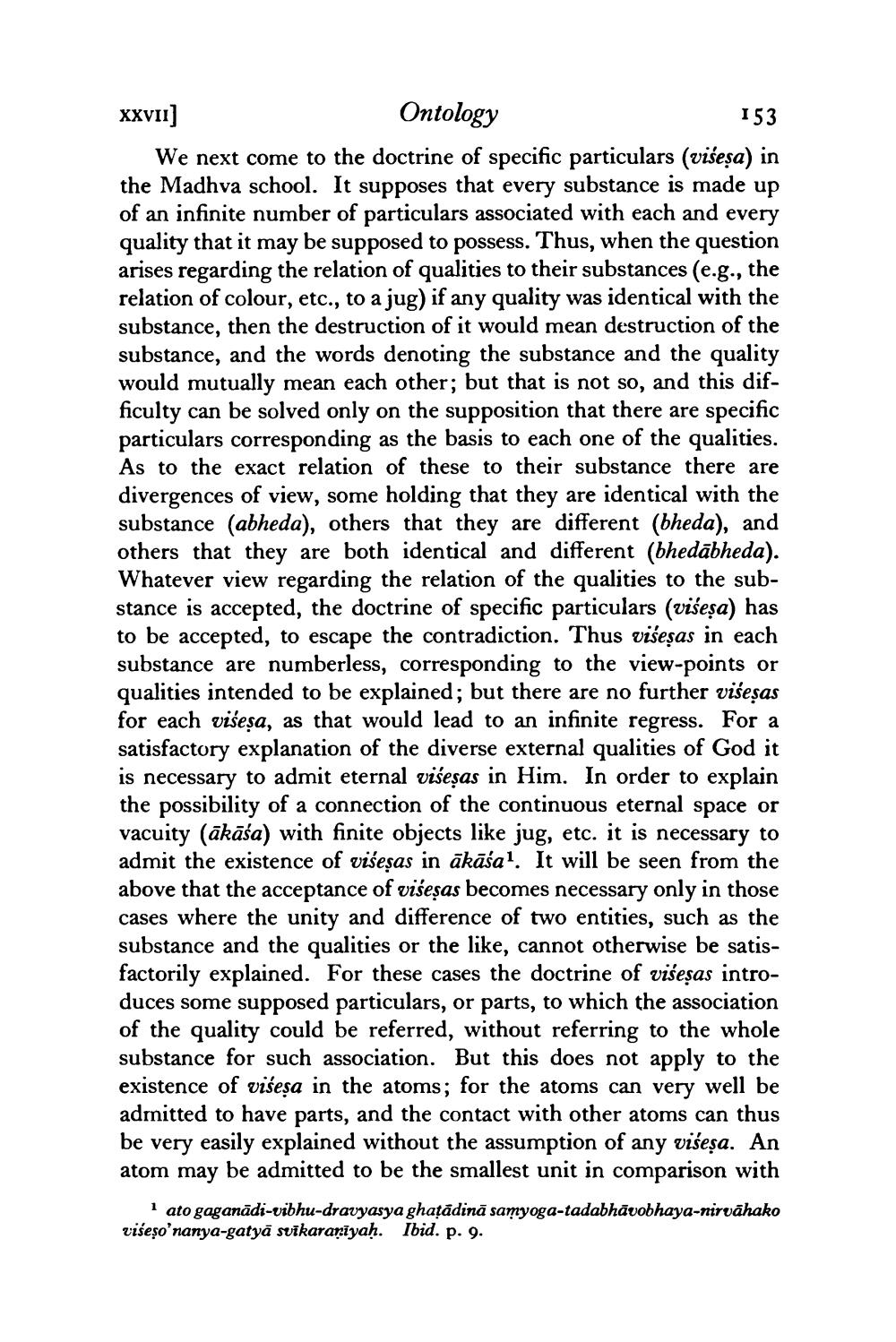________________
XXVII] Ontology
153 We next come to the doctrine of specific particulars (višeșa) in the Madhva school. It supposes that every substance is made up of an infinite number of particulars associated with each and every quality that it may be supposed to possess. Thus, when the question arises regarding the relation of qualities to their substances (e.g., the relation of colour, etc., to a jug) if any quality was identical with the substance, then the destruction of it would mean destruction of the substance, and the words denoting the substance and the quality would mutually mean each other; but that is not so, and this difficulty can be solved only on the supposition that there are specific particulars corresponding as the basis to each one of the qualities. As to the exact relation of these to their substance there are divergences of view, some holding that they are identical with the substance (abheda), others that they are different (bheda), and others that they are both identical and different (bhedābheda). Whatever view regarding the relation of the qualities to the substance is accepted, the doctrine of specific particulars (višesa) has to be accepted, to escape the contradiction. Thus višesas in each substance are numberless, corresponding to the view-points or qualities intended to be explained; but there are no further višeșas for each višeșa, as that would lead to an infinite regress. For a satisfactory explanation of the diverse external qualities of God it is necessary to admit eternal viseșas in Him. In order to explain the possibility of a connection of the continuous eternal space or vacuity (ākāśa) with finite objects like jug, etc. it is necessary to admit the existence of višeșas in ākāśal. It will be seen from the above that the acceptance of viseșas becomes necessary only in those cases where the unity and difference of two entities, such as the substance and the qualities or the like, cannot otherwise be satisfactorily explained. For these cases the doctrine of viseșas introduces some supposed particulars, or parts, to which the association of the quality could be referred, without referring to the whole substance for such association. But this does not apply to the existence of višesa in the atoms; for the atoms can very well be admitted to have parts, and the contact with other atoms can thus be very easily explained without the assumption of any viseșa. An atom may be admitted to be the smallest unit in comparison with
I ato gaganādi-vibhu-dravyasya ghațădină samyoga-tadabhāvobhaya-nirvāhako višeşo' nanya-gatyā svikararīyaḥ. Ibid. p. 9.




